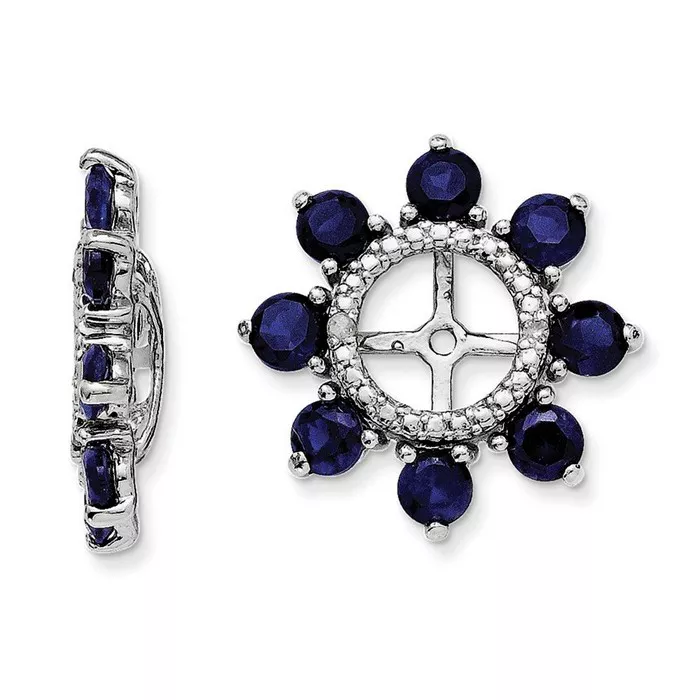Diamond earrings are not only a symbol of elegance and luxury but also a significant investment. Whether you’re purchasing diamond earrings for yourself or as a gift, ensuring their authenticity is crucial. With advancements in technology, there are several methods and techniques available to verify the genuineness of diamond earrings. This comprehensive guide will equip you with the knowledge to confidently determine whether your diamond earrings are real.
Understanding Diamond Basics
Before diving into the authentication methods, it’s essential to grasp some fundamental aspects of diamonds:
The 4Cs: Diamonds are evaluated based on the 4Cs – Cut, Color, Clarity, and Carat weight. These criteria determine a diamond’s quality and value. Familiarize yourself with these factors to understand what to look for in a genuine diamond.
Diamond Certification: Authentic diamonds are often accompanied by certificates from reputable gemological laboratories such as GIA (Gemological Institute of America) or AGS (American Gem Society). These certificates provide detailed information about the diamond’s characteristics, serving as proof of authenticity.
Visual Inspection
Visual examination is the first step in determining the authenticity of diamond earrings. Here’s what to look for:
Mounting Quality: Examine the setting of the earrings. High-quality diamonds are typically set in precious metals such as platinum, gold (14K or 18K), or white gold. Check for any signs of discoloration, wear, or loose prongs which could indicate a lower-quality setting.
Hallmarks and Stamps: Legitimate jewelry pieces often bear stamps or hallmarks indicating the metal type and purity. Look for stamps such as “PT” for platinum or “585” and “750” for 14K and 18K gold respectively. A missing or unclear hallmark may raise suspicions about the authenticity of the metal.
Diamond Mounting: Inspect how the diamonds are mounted. Authentic diamond earrings will have precise and secure settings with smooth edges and no gaps between the stones and the metal.
Using a Diamond Tester
A diamond tester is a handheld device that quickly identifies whether a stone is a diamond or a simulant like cubic zirconia. Here’s how to use it effectively:
Calibration: Before testing, ensure the diamond tester is properly calibrated according to the manufacturer’s instructions. This calibration ensures accurate results.
Testing Procedure: Place the diamond earring against the probe tip of the tester. The device will emit a beep or light indicator if the stone is a diamond. If there’s no reaction, the stone may be a simulant.
Testing Different Parts: Test different parts of the earrings, including the metal setting and any smaller stones present. Diamond testers can distinguish between diamonds and simulants based on their thermal conductivity.
Conducting a Water Test
The water test is a simple method to differentiate diamonds from simulants. Here’s how to perform it:
Fill a Glass with Water: Use a clear glass and fill it approximately three-quarters full with water.
Drop the Earring in Water: Gently drop the diamond earring into the water. Diamonds are dense and should sink to the bottom due to their high density.
Observation: Observe the behavior of the earring in water. If the earring floats or stays at the surface, it is likely not a diamond but a simulant like cubic zirconia, which has lower density.
Ultraviolet Light Test
Some diamonds exhibit fluorescence under ultraviolet (UV) light. Here’s how to perform this test:
Dark Room: Conduct the test in a dark or dimly lit room to better observe fluorescence.
UV Light Source: Use a UV light source, such as a UV flashlight, and shine it on the diamond earrings.
Observation: Genuine diamonds may exhibit blue fluorescence, especially under long-wave UV light (365 nm). However, not all diamonds fluoresce, so the absence of fluorescence doesn’t necessarily indicate the stone is not a diamond.
See Also: What Clarity Should Diamond Earrings Be?
Checking with a Jeweler
If you’re uncertain about the authenticity of your diamond earrings, consider consulting a reputable jeweler or gemologist. Jewelers have the expertise and equipment to conduct more advanced tests, including:
Loupe Examination: Jewelers use a jeweler’s loupe, typically a 10x magnification tool, to inspect the diamond closely for inclusions, blemishes, and other characteristics that authenticate natural diamonds.
Microscopic Inspection: Advanced gemological laboratories may use microscopes to examine the diamond’s internal structure and confirm its natural origin.
Professional Verification: Reputable jewelers can also verify the authenticity of the diamond earrings based on their experience and knowledge of gemstones.
Conclusion
Determining whether diamond earrings are real involves a combination of visual inspection, basic tests, and sometimes professional verification. By understanding the characteristics of diamonds and employing the methods outlined in this guide, you can confidently assess the authenticity of diamond earrings before making a purchase or ascertaining the value of your existing jewelry collection. Remember, while advanced testing methods provide more accurate results, even basic tests can provide valuable insights into the authenticity of diamonds.

